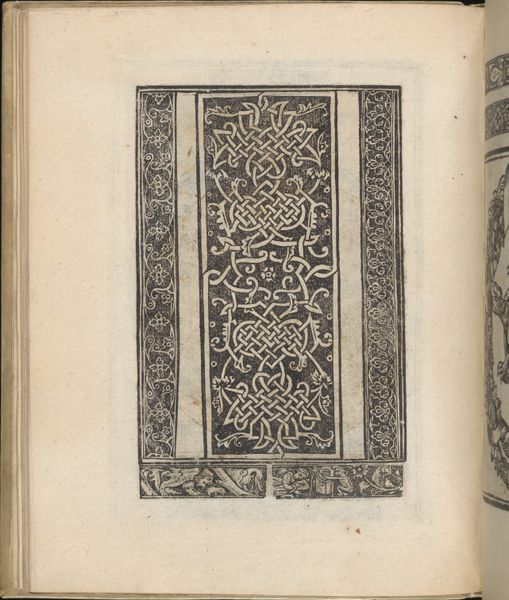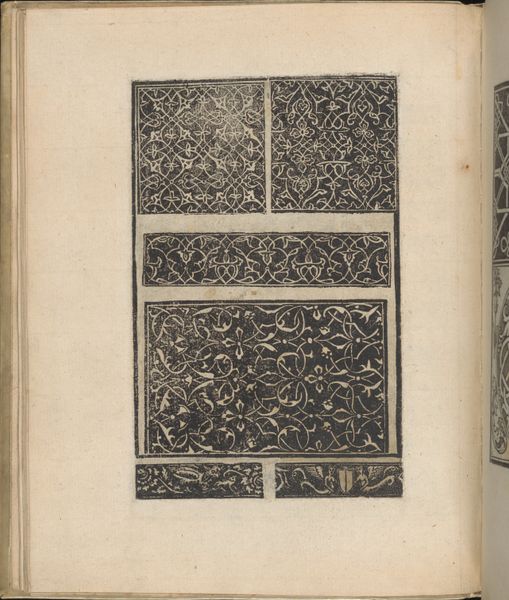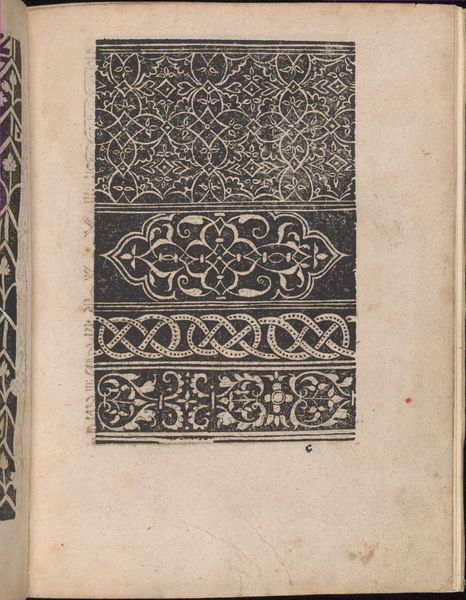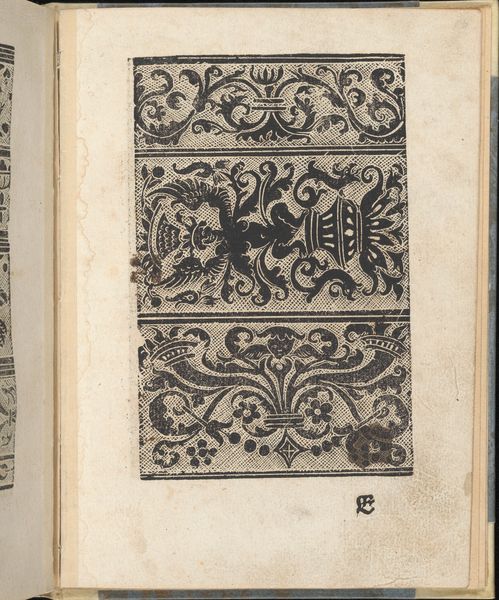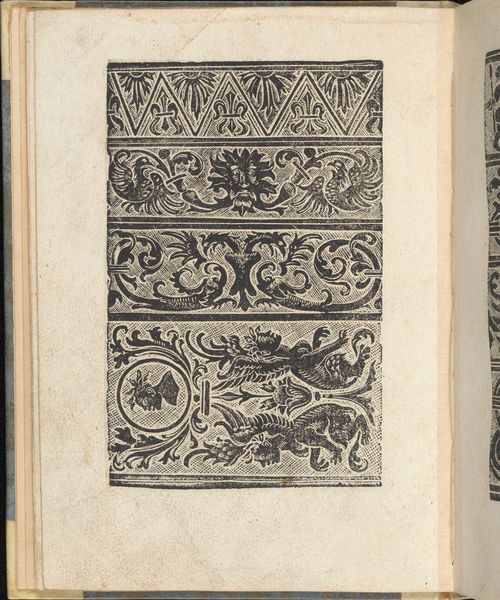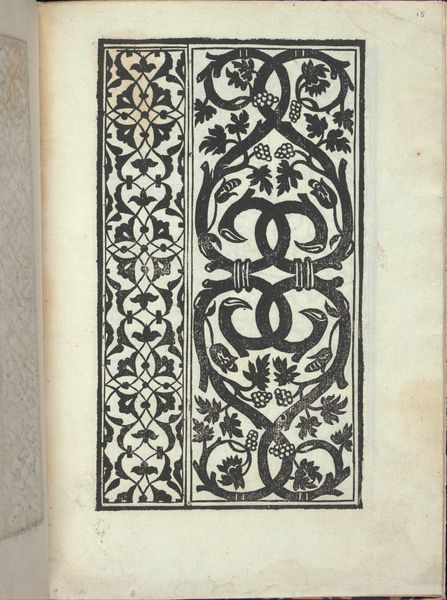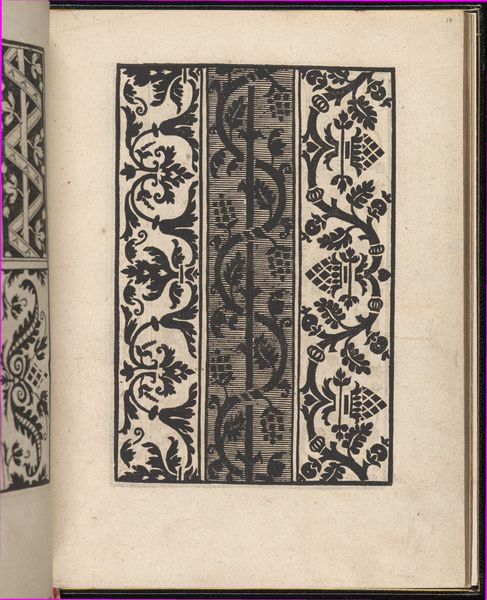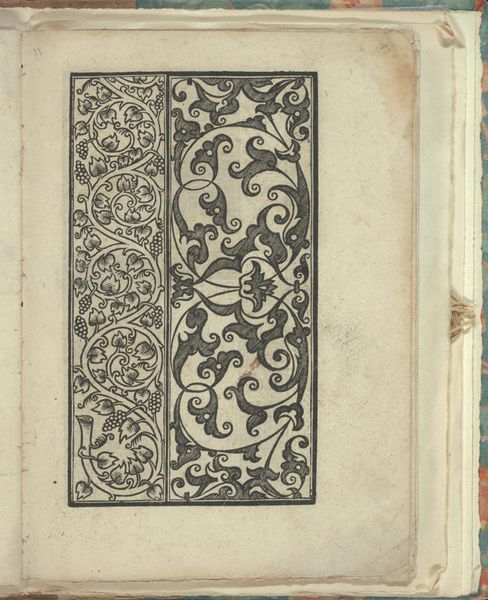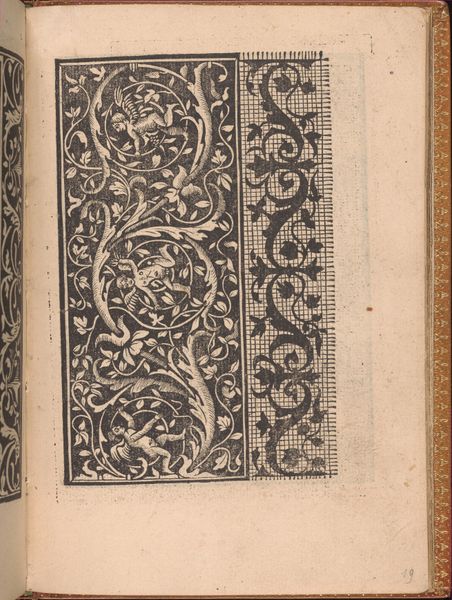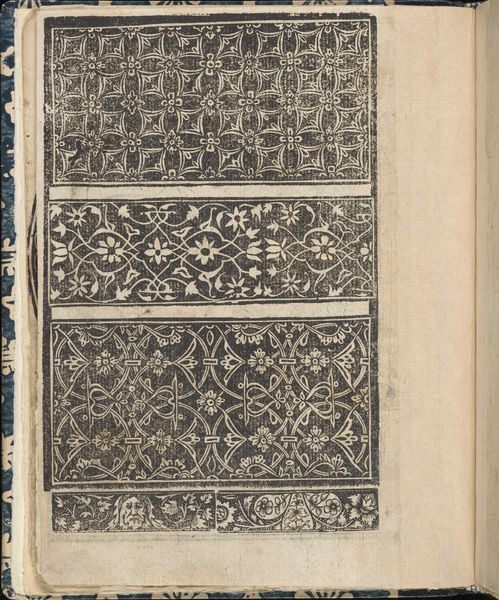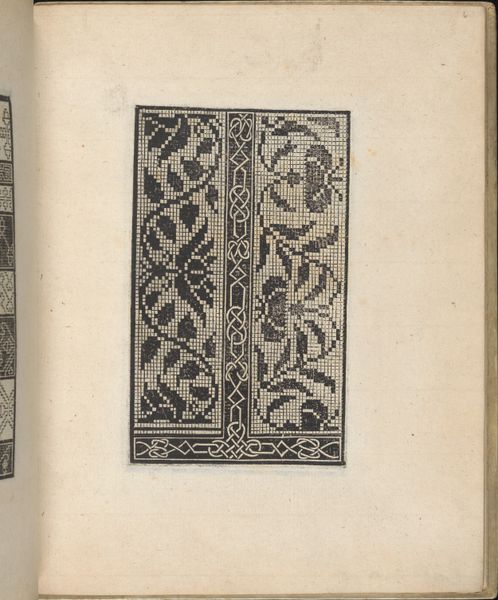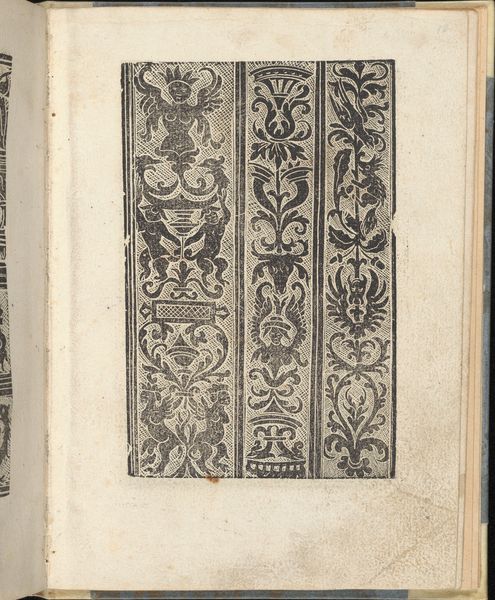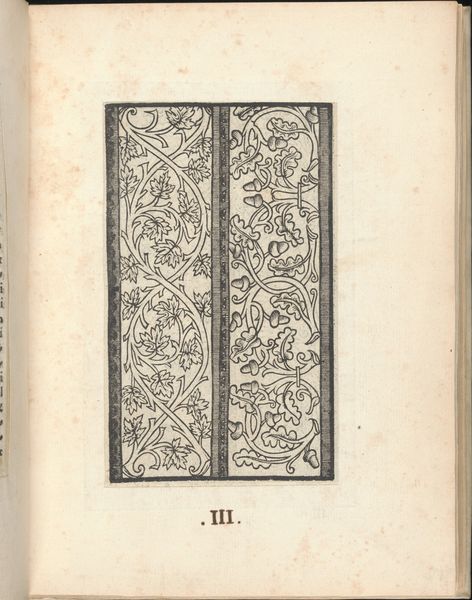
drawing, graphic-art, ornament, print, engraving
#
drawing
#
graphic-art
#
ornament
# print
#
geometric
#
italian-renaissance
#
engraving
Dimensions: Overall: 9 13/16 x 7 7/8 in. (25 x 20 cm)
Copyright: Public Domain
Editor: We're looking at a page from "Trionfo Di Virtu. Libro Novo..." created in 1563 by Matteo Pagano. It's a detailed engraving, primarily depicting geometric and floral patterns. I’m immediately drawn to the intricacy and repetition of these elements; it creates almost a dizzying, hypnotic effect. How do you interpret the symbolism within this piece? Curator: The most compelling aspect here is the interplay between geometric structure and organic forms, reflecting a Renaissance fascination with order and nature's inherent design. The repeated motifs evoke a sense of cultural memory; consider how similar patterns appear across diverse cultures as protective symbols or representations of cosmic harmony. The central panel particularly seems almost like a compressed garden, doesn’t it? What emotional or cultural connections does that stir in you? Editor: I hadn't considered the global connection. The "compressed garden," as you put it, feels like a contained Eden. And I also see something vaguely resembling crosses repeated, though perhaps that’s my own bias. Is that religious symbolism intentional, or am I reading too much into it? Curator: Perhaps not too much at all. During the Renaissance, the boundaries between sacred and secular imagery often blurred. The "cross-like" shapes might be stylized floral elements subtly alluding to Christian iconography or they could be interpreted as symbols for the cardinal directions, representing balance. Consider them visual anchors meant to be decoded with meaning beyond the immediate impression. Editor: So, it's less about direct representation and more about layers of possible interpretations woven together into the design. I am now curious how the repetition would have resonated for audiences during the Italian Renaissance. Curator: Precisely. Repetition reinforces symbolic power, creating a mantra-like effect. Visual mantras, if you will, meant to instill values, protection, or harmony. Looking at this artwork, we learn less about its original intent, perhaps, than about enduring symbolic strategies throughout human culture. Editor: That's a great point! I came in seeing a decorative pattern, and I'm leaving thinking about how visual language functions across time and cultures. Thanks so much for this enlightening discussion.
Comments
No comments
Be the first to comment and join the conversation on the ultimate creative platform.

